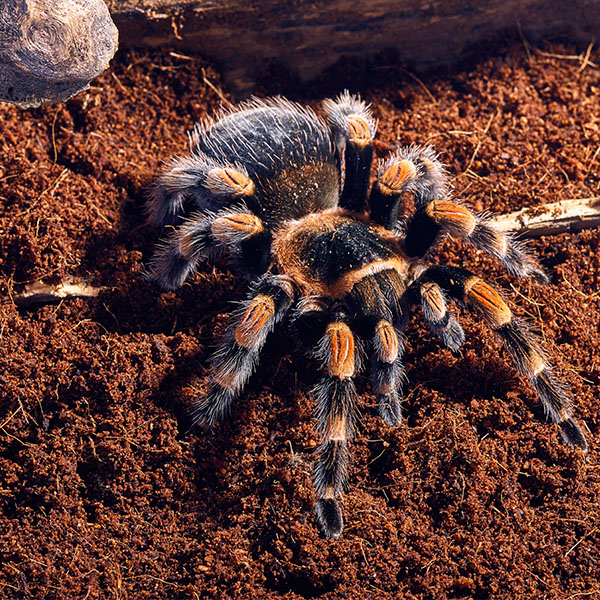Mexican Red Knee Tarantula
Brachypelma smithi

Animal Ambassadors
These large tarantulas may look threatening, but they are relatively harmless to humans. Although capable of biting, Mexican red knee tarantulas will typically flick or drop off urticating hairs on their abdomen when threatened; these hairs are barbed and can cause irritation or a rash. Because of their large size, these tarantulas are capable of taking down fairly large prey, including amphibians and small rodents. They ambush prey, rather than spinning webs. Like all arthropods, red knee tarantulas must molt their exoskeleton in order to grow. Before molting, tarantulas move and hunt less to conserve energy. Afterwards, they may not eat for up to a month, as their “fresh” fangs are too soft to bite with. These colorful spiders are vulnerable to extinction due to a number of factors. Many wild red knee tarantulas are captured and exported for the pet trade. Additionally, many people are afraid of spiders or associate them with negative myths; many tarantulas are intentionally killed with pesticides, gasoline, or other methods.
Large insects, frogs, mice
Western and southern Mexico
Males: 5 years | Females: 13-18 years
Deciduous tropical forests, scrublands, arid regions
6 inches
